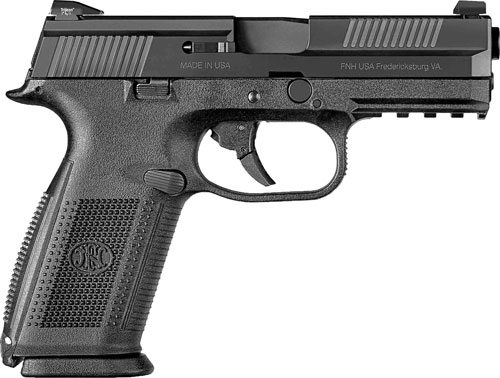

#Fn 9mm pistols plus#
In the event you have to strip the magazine out of the gun. A nice plus for this FN 509 Review Grip/Ergonomics They allow you to get in there and get more grip on the mag baseplate. There are two little indentations at the bottom of the sides of the grip. S o they can’t chamfer much to get a good magwell on the gun. The material around the grip, or at least on the sides, is very thin. The magwell of the gun is chamfered on pretty much all the sides.Ī lthough it’s not much this is still chamfering. The 24 round magazine includes a sleeve so that you won’t over insert the magazine into the gun. You can also buy extensions for the magazines and you can get a 24 round magazine directly from FN. I haven’t seen aftermarket companies show any interest in providing options.
#Fn 9mm pistols free#
They’re metal construction and they drop free quite easily.

The magazines themselves you can only get then as an FN branded product, and they’re not cheap. On the upside, that means you don't have to pay Hi-Power money to get an often very well cared for FN 1922 that is steeped in history and tells a story.Shop for the Best Prices on In Stock FN 509sĮuro Optic | Grab A Gun | Primary Arms | PSA | Brownells | Today, the FN 1922 has been out of production for over 45 years and, while collectors will walk over broken glass to get to a beat-up Hi-Power of the same vintage, at the same time often neglect to show the smaller gun that same sort of attention. The model continued to linger on in service, with historian Anthony Vanderlinden detailing that numbers of Bavarian border guards and West German Bahnpolizei continued to use the guns for decades into the Cold War while some Danish police still clung to their M1922s as late as 1989 "with officers refusing to trade the guns in for Walther pistols." Instead of Hi-Powers or even more compact Model 1910s, FN's internal security force relied on the M1922 as their sidearm of choice into the 1980s, something that should speak volumes.Ĭontest: Enter to win a range-ready, envy-inducing FN 509 Compact Tactical direct from FN! Remaining popular, the M1922 kept rolling off the assembly lines until at least 1975. When the FN factory was liberated by the Allies in late 1944, the workers got right back to their job, this time refurbishing American infantry weapons, in addition to continuing production of legacy designs. because they came back from Europe in a GI's duffle bag. Lots of 1940s-era FN 1922 are wartime collectibles with "dirty bird" markings, often here in the U.S. 32 ACP, other than P-38s and Lugers, the FN 1922 was the most common handgun in German service in World War II, outnumbering Walther PP/PPKs by a more than 2-to-1 margin. Dubbed the Pistole 641b (with the letter for “Belgian”) in the. Of those, the new management would supply over 400,000 Model 1922s to send back to Germany – more than any other design. When the Germans came to Belgium without an invitation in 1940, numerous handgun models were in standard production.

The Belgian Gendarmerie, naturally, also used the pistol. Overseas, Mexico bought not only thousands of pistols but huge stocks of spare parts to keep them in working order for generations without having to write back to Herstal for support. Then came Turkish contracts, orders from Greece, tenders from Romania (which also bought BAR light machine guns and motorcycles from FN), and deliveries to Finland, France, and Denmark. Likewise, Holland, classifying the pistol as the M.25, would order another 50,000. Across the FN 1922's 50-year production run, at least seven different grip variations were used, including animal horn, Bakelite, wood, and plastic/synthetic panels.


 0 kommentar(er)
0 kommentar(er)
